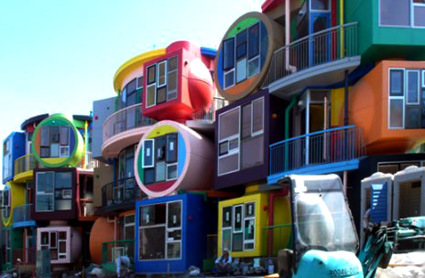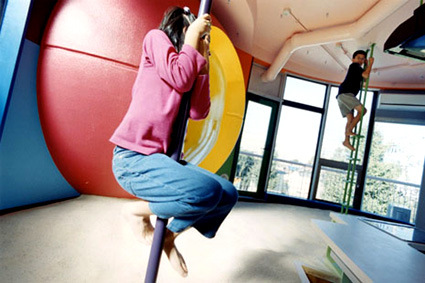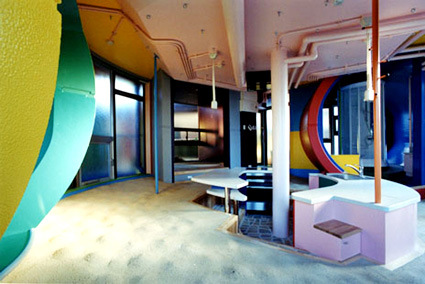


Externally the architecture may look like Gaudi rose from the dead and had a cup too much, or perhaps the architect is just woefully child-like. But these lofts, “Reversible Destiny – Mitaka” has just the opposite aim. Constructed in 2005 with the aim to delay the degradation of elderly’s sense, it invigorates and excites their senses not only by the vivid colors and complexly-juxtaposed geometries, but also by purposely having a difficult house to live in.
For instance, inside, each apartment features a dining room with a grainy and bumpy floor, a sunken kitchen and a study with a concave floor. Electric switches are located in unexpected places on the walls so you have to feel around for the right one. A glass door to the veranda is so small you have to bend to crawl out. You constantly lose balance and gather yourself up, grab onto a column and occasionally trip and fall.
According to the people behind this, Shusaku Arakawa, a Japanese artist based in New York, and his creative partner, poet Madeline Gins:
Set up to put fruitfully into question all that goes on within them, they steer residents to examine minutely the actions they take and to reconsider and, as it were, recalibrate their equanimity and self-possession, causing them to doubt themselves long enough to find a way to reinvent themselves. These tactically posed architectural volumes put human organisms on the track of why they are as they are. To be sure, every loft comes with a set of directions for use.
Like a crazy children’s playground, this house is definitely one for you not to relax in. And that is precisely the point. Many of you may know some elderly relatives who’d slowly become dull and senile simply by being bored and sit their lives away. I’m not quite sure how much of this architecture is bull, or whether it be truly be effective, but judging by their sale of $750,000 a piece and people actually snapping it up, it does seem like a good venture!
More pictures of this project, and other similarly radical proposals for hotels here.

